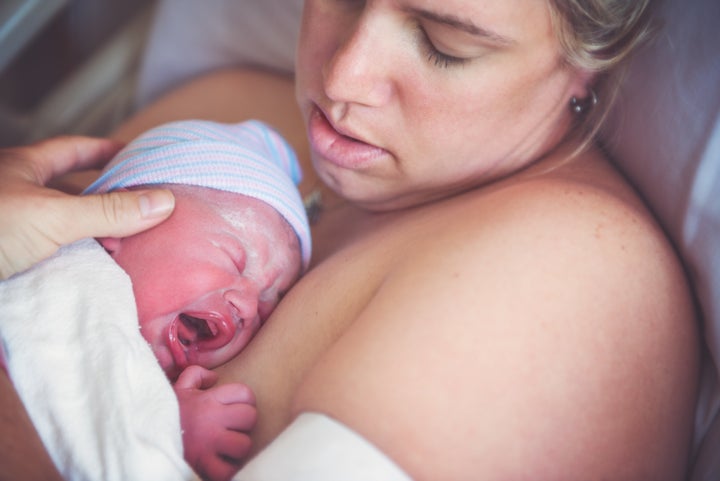
Postpartum care in the United States is notoriously anemic. A new mom generally has a six-week check-up during which her OB-GYN or midwife will ask a few basic questions and check whether her uterus has shrunk back down ― and that’s about it.
The consequences of healthcare providers spending relatively little time with postpartum women have been well-documented in terms of missed mental health diagnoses, but the longterm effects on women’s bodies are also profound ― and often overlooked. A recent investigation into pelvic floor disorders published by Mother Jones explained that up to 80 percent of women who have vaginal deliveries have experienced tearing of the pelvic skin and muscles, and 1 in 10 women experience incontinence as a result. The stress of a vaginal delivery can increase a woman’s risk of developing pelvic organ prolapse ― a painful condition in which her pelvic organs essentially fall out of place ― decades down the road.
But one country that is giving women’s postpartum pelvic health the attention it deserves? France. For decades, the French government has subsidized “perineal re-education,” i.e., physiotherapy that helps strengthen a new mother’s pelvic floor.
“When I gave birth to our daughter last November, my husband and I spent five government-sponsored days in the maternity ward at Clinique Leonardo Da Vinci, where we learned that French hospital meals come with a cheese course and that as part of my postpartum treatment I would be prescribed 10 to 20 sessions of la rééducation périnéale,” writer Claire Lundberg explained in her 2012 Slate essay, “The French Government Wants To Tone My Vagina.”
“This is a kind of physical therapy designed to retrain the muscles of the pelvic floor, including the vagina, and is one of the cornerstones of French postnatal care,” she wrote.
To American mothers, the notion of the government paying for a dedicated pelvic coach might sound, well, insane. And it is indeed...intimate.
“Essentially, you go for your six-week visit and if you have healed adequately, they give you your referral for the ‘reeducation,’” Dr. Dana Gossett, an OB-GYN and professor with the University of California San Francisco’s Department of Obstetrics, Gynecology and Reproductive Sciences told The Huffington Post. “It usually starts in the first couple of months, and it involves Kegel exercises ― that you do with a coach.”
That coach ― a trained physiotherapist specializing in pelvic floor rehab ― helps guide a woman through Kegel exercises, putting his or her fingers into the new mother’s vagina to make sure she is contracting and relaxing her muscles correctly, Gossett explained. Coaches also tend to use biofeedback to ensure maximum results.

“They put an electronic device in the vagina that can be incredibly helpful because you can really see the strength [of a woman’s Kegel] while she’s doing it,” Gossett said. “They also use functional electrical stimulation, which sounds a little creepy, but essentially they put electrodes in the vagina, which has been shown to help improve urinary continence and decrease pain.”
And yet however creepy or comical it may sound (“It was so hard, and so ridiculous—what was I doing with no pants on ... while a strange French woman kept telling me to breathe and contract,” Lundberg wrote), experts argue the benefits are profound, reducing women’s immediate pain levels, helping to combat urinary and fecal incontinence and even making intercourse pleasurable again. It is also a long-term investment in public health.
“I think this is an excellent example of American medicine not being geared toward preventative health,” said Gossett. According to Mother Jones, the typical costs for a vaginal hysterectomy ― one of the common ways to deal with uterine prolapse ― are more than $14,000, and bladder repair surgery is twice that. The market for adult incontinence products is expected to soar to $2.7 billion by 2020, and while it’s hard to say exactly how much vaginal childbirth contributes to all of that, 80 percent of women who suffered from pelvic floor disorders in one study were mothers, Mother Jones reports.
Of course, France isn’t the only place in the world where pelvic floor therapy is an option. In the United States, women can seek out treatment with a trained physiotherapist, and most insurances will cover it, Gossett said. There is also always the option of doing Kegels at home, which can help and which she encourages all women who’ve delivered babies to do.
Yet so many women aren’t told to recognize when they’re having a problem or encouraged to get help, to say nothing of the fact that nearly 1 in 4 new mothers in this country return to work two weeks after giving birth. It’s part of a broader culture that does little to tend to the needs of new parents.
“The fact is that not only are we not tuned into preventative health, we are disinterested in the care of postpartum families, as exemplified by our lack of paid family leave,” Gossett argued. “We just really don’t seem to care how women do postpartum.”
Well, merde.
